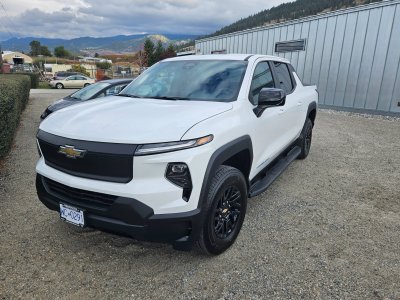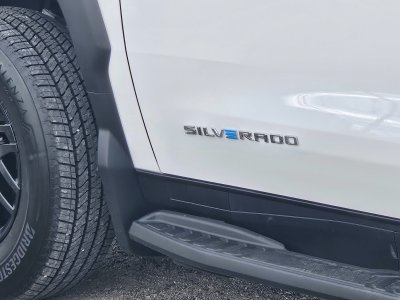Got my first look at the Silverado EV in the wild this past week. Sleek looking package, a little more visually distinct from its ICE teammates than Lightning is from regular F-150s. It caught my eye as I drove past, was still there 15 minutes later on the return trip so I stopped in for a look.
Like all current model half ton trucks, it's huge. Bed rails are at my shoulder level, like a one ton from a decade ago. The endless weapons race that all auto makers seem to engage in. But there's another reason, the battery in this thing is a monster: 244 kWh. That's more than double what my Lightning has. Claimed range is 700 km, slightly more than what my Silverado 5.3L crew was good for. Doubtful you'll achieve that number on the highway of course, higher speeds knock it down pretty quickly. But still, that is a huge step up on Lightning, even the ER battery (130 kWh/480 km).
There's a payback of course, there always is. That battery is heavy, really heavy. The truck weighs 8,600 lb, and that cuts into payload - only 635 kg/1400 lb including driver and passengers. (Lightning has 2250 lb). The extra weight costs on efficiency as well, city/highway combined EPA number of 33 kWh/100 km vs 28 for Lightning, ie, almost 20% worse.
I'm not a fan of the charge port location. When towing, you'll be hoping for pull through charging locations. Otherwise it's unhitch to charge. I guess one mark in its favour is that left rear position matches Tesla. Lightning is a slightly awkward fit at those because of the front left setup. You need to park in the next stall over from the correct one for the charge cable to reach.
Still, it's a lot of truck for the money. This one, the 4WT, starts at $87K, the smaller battery 3WT gives away 100 km of range but costs ten grand less.










